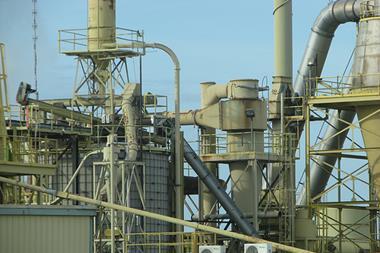As new projects and construction in the renewables sector ramps up, firms need a high concentration of risk management, insurance and claims expertise to prepare for an inevitable increase in losses
As the renewables sector enters a new wave of global construction activity, the build out of projects continues to be jeopardised by contractor errors and defects, Nat Cat and extreme weather events.
These challenges, both on- and offshore, may lead to delayed project start times and drive a surge in construction claims, which are among the most complex to settle.

This is according to a new market insights report produced by GCube Insurance. The report shares key findings from a decade of proprietary claims data, including $1 billion in Construction All Risks (CAR) and Delay in Start Up (DSU) claims for onshore and offshore sectors, along with insights from industry experts.
Key findings include:
- Contractor error and defect continue to be the major root causes of offshore wind losses – representing 63% of claims by frequency in 2022, up from 55% in 2020
- Historically, increased offshore construction activity has been matched by a surge in insurance claims, forming a cyclical ‘boom and bust’ pattern
- 48% of onshore (wind and solar) construction losses by severity are attributable to Nat Cat and extreme weather, followed by contractor error and defect at 16%
- Of weather-related losses, flooding and heavy rainfall prove to be the costliest weather events, representing 18% of total claims by frequency but 46% of the total claims cost
These construction claims trends broadly mirror the picture for operational projects. However, the impact of losses from both human error and weather-related events on construction projects can be far greater – leading to more complex and costly insurance claims.
While the nature of construction losses is relatively constant, new projects also face increased risk of loss from two sources: one, the higher frequency of extreme weather, the other, the penetration into emerging markets, like the US, MENA, and Asia, where there is less data to guide strong project management.
Fraser McLachlan, founder & CEO, GCube, said: “The appetite for installing new projects makes this a historically busy period for the renewables sector. It’s also a period marked by unprecedented Nat Cat threat, and a shortage of skilled workers and specific installation equipment, like vessels and cranes. What this means is that the Delay in Start Up (DSU) claims process for a loss in the construction phase will only become more complicated.”
Key lessons for renewables businesses
GCube’s data highlights lessons from the past that the renewables sector must heed.
The target for offshore construction must be longer-term sustainability, prioritising successful project outcomes over rapid expansion, and supported by a growing pool of skilled contractors and specialist vessels.
Meanwhile, the target for onshore construction must be to prevent Nat Cat losses being compounded by human errors arising from the race to scale up technology.
As construction activity ramps up in the coming months, GCube’s core recommendations to risk managers seeking to mitigate potential losses include:
- Having a robust baseline project plan supplemented by thorough project monitoring
- Understanding the insurance policy and seeking expert advice where required
- Developing trusted contacts in the supply chain to ensure quality control
McLachlan added: “Over the past few decades, GCube has witnessed first-hand how boom and bust cycles manifest in pressure on the supply chain and culminate in contractor error and defect issues. This, in turn, has led to a more cautious approach from underwriters.”
“However, the forthcoming period of construction activity – and the rising impact of extreme weather - requires a high concentration of risk management, insurance and claims expertise as the industry braces itself for an inevitable increase in losses.
“Pivotal to minimising project disruption and unbudgeted expense will be the collaboration of insureds and insurers to exchange information and expertise throughout the project lifecycle.”














No comments yet